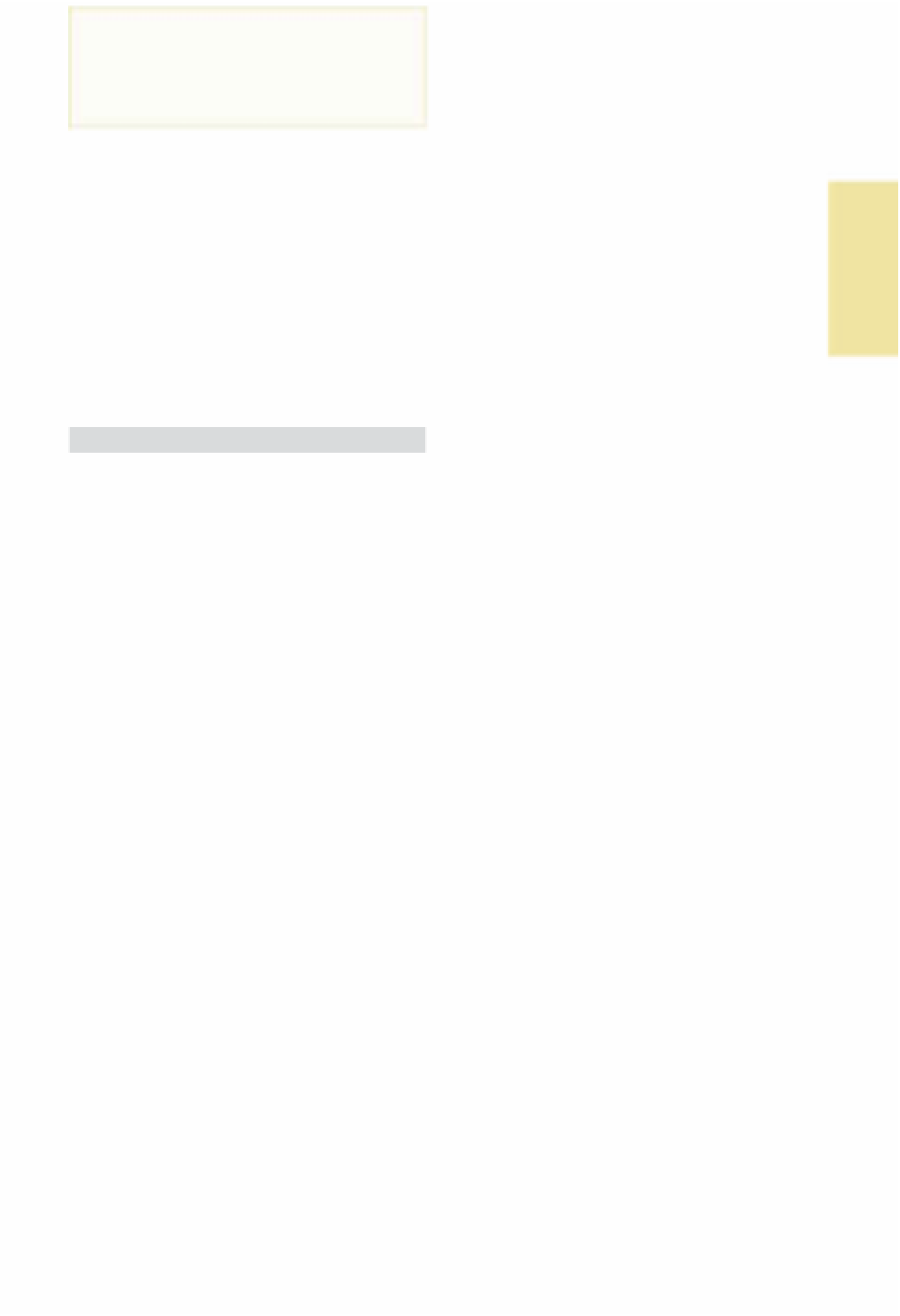Travel Reference
In-Depth Information
poor. For serious
medical emergencies
,
it's best to try to get your insurance
company to transfer you to Bangkok.
We've provided general emergency
telephone numbers (see box above),
although in a crisis it's best first of all to
enlist the help of your hotel, and
secondly to immediately contact your
travel insurance company back home for
additional back-up and support.
Street-corner
pharmacies
throughout
Cambodia are well stocked with basic
supplies, and money rather than a
prescription gives easy access to anything
available, though beware of out-of-date
medication. Standard shop hours (see
p.76) apply at most of these places, but
some stay open in the evening. More
reputable operations with English- and
French-speaking pharmacists can be
found in Phnom Penh and Siem Reap,
where a wider variety of specialized drugs
is available.
EMERGENCY NUMBERS
Police
T
117
Fire
T
118
Ambulance
T
119
here are plenty of civilian and military
police
hanging around, whose main
function appears to be imposing arbitrary
fines or tolls for motoring “offences”. Of
the two, the
civilian police
, who wear
blue or khaki uniforms, are more helpful.
Military police wear black-and-white
armbands. If find yourself in need of
actual police assistance, your best bet is
the
tourist police
o
ces in major cities;
they generally speak some English.
2
LANDMINES
he war has ended, but the killing
continues. Years of guerrilla conflict have
left Cambodia the most densely mined
country in the world. he statistics are
horrendous: up to six million
landmines
in the country; more than forty thousand
amputees; and hundreds of further mine
victims every year. he worst affected
areas are the province of Battambang
and the border regions adjacent to
hailand in the northwest, namely
Banteay Meanchey, Pailin and Preah
Vihear provinces.
Although the risk is very real for those
who work in the fields, the threat to
tourists is minimal. he main
tourist
areas
are clear of mines, and even in the
heavily mined areas, towns and roads are
safe. he main danger occurs when
striking off into fields or forests, so the
simple solution is to stick to known safe
paths. If you must cross a dubious area,
try to use a local guide, or at least ask the
locals “
mee-un meen dtay
?” (“Are there
mines here?”). Look out for the red
mine-warning signs, and on no account
touch anything suspicious.
INFORMATION AND MAPS
Cambodia has a network of basic
tourist
o
ces
, although they're desperately
starved of resources and generally don't
have much information (even if they're
open, which often they're not), so it's
better to ask at local guesthouses.
Most
maps
of Cambodia are horribly
inaccurate and/or out of date. Far and
away the best is Reise Know-How's
Kambodscha map (that's “Cambodia” in
German), beautifully drawn on
un-rippable waterproof paper, and as
detailed and up-to-date as you could
hope, given Cambodia's ever-developing
road network.
MONEY AND BANKS
Cambodia's o
cial unit of currency is
the
riel
, abbreviated to “r”.
Notes
come
in denominations of 100, 200, 500,
1000, 2000, 5000, 10,000, 20,000,
50,000 and 100,000. US dollars are
used throughout the country as a second
currency, interchangeable with riel at an
almost universally recognized rate of $1
= 4000r. Prices are quoted in a mix of
dollars and riel (or sometimes both). In
MEDICAL CARE AND EMERGENCIES
Clinics and hospitals in Phnom Penh
are equipped to deal with most ailments
(see p.84). Sihanoukville and Siem Reap
have limited facilities, but generally
medical facilities outside Phnom Penh are



































Search WWH ::

Custom Search